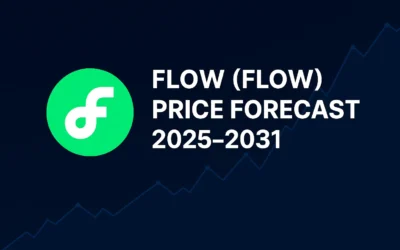Introduction
This comprehensive guide will lead you through the fundamentals of value investing, covering essential financial ratios, stock selection frameworks, and strategies for efficient investing and building a resilient portfolio. Designed to elevate you from a well-informed beginner to a savvy investor, it provides detailed modules and practical applications to enhance your investment skills.
In this article, we will cover the fundamentals of value investing, including key financial ratios, stock selection frameworks, and strategies for building an anti-fragile portfolio. We’ll also provide insights on when to buy and sell stocks, analyze financial statements, and understand the importance of the margin of safety.
If you are more interested in growth investing, check out our detailed guide here. For a balanced approach that combines elements of both growth and value investing, explore our article on GARP investors here.
This comprehensive guide is specifically tailored for value and defensive investors, aiming to transition you from a well-informed beginner to a savvy investor through four detailed modules.
Fundamentals to Get Started Quickly
In this initial masterclass, we will cover the basics of investing in the stock market. Future modules will delve into building a robust stock selection framework, evaluating your margin of safety, and constructing a cohesive and sustainable investment portfolio. Let’s begin with the fundamental questions: why, who, what, where, when, and how.
Why Invest in Stocks to Build Wealth?
Why should you favor stocks for wealth creation? The historical performance of stocks over the past 200 years, as illustrated by economist Jeremy Siegel, shows that equities have consistently outperformed other asset classes such as bonds, gold, and cash. Despite market volatility and economic downturns, those who invested in stocks rather than holding cash have significantly increased their wealth.

For instance, if you had invested $1 in the stock market in 1802, it would be worth over $1 million today, while the same dollar kept in cash would have lost almost all its purchasing power. This demonstrates the power of compound interest and the long-term growth potential of equities.
Who Can Invest in Stocks for the Long Term?
Anyone can invest in stocks for the long term, but it requires patience, discipline, and a clear understanding of your risk tolerance. Successful investing involves following a structured process consisting of three main steps:
- Stock Analysis and Selection Methodology: Develop a robust method to analyze and select stocks based on their intrinsic value.
- Margin of Safety Evaluation: Ensure that your purchase price offers a sufficient margin of safety.
- Portfolio Management Strategy: Implement a strategic portfolio management approach to make informed, calculated, and methodical investment decisions.
What are Stocks and Their Types?
A stock represents a financial security issued by a company to raise funds. When you buy stocks, you acquire ownership in the company. There are two main types of stocks:
- Common Stocks: These stocks provide voting rights and a share in the company’s profits through dividends.
- Preferred Stocks: These typically do not have voting rights but offer a fixed dividend.
Understanding the different types of stocks and their characteristics is crucial for informed investing.
Where to buy shares? Which brokers are the best?
When it comes to buying stocks, selecting the right brokerage platform is crucial. We use both Interactive Brokers (IBKR) and Trade Republic for their robust features and competitive pricing, each serving different investment strategies.
Trade Republic is a European brokerage known for its simplicity and cost-effectiveness, making it an excellent choice for retail investors. Trade Republic offers commission-free trading on a wide array of financial instruments, including stocks, ETFs, and derivatives. The platform is user-friendly, designed for ease of use on mobile devices, and provides secure and regulated services. We use Trade Republic for long-term investments and a buy-and-hold strategy, especially because it remunerates 4% on capital. This combination allows us to diversify our investments and mitigate risks associated with the potential failure of either platform, though both are industry giants and highly reputable. You can explore Trade Republic here.
When to Buy Stocks?
Timing the market can be challenging, but focusing on long-term investment horizons can mitigate this difficulty. Instead of trying to buy at the lowest point, prioritize purchasing stocks of solid companies at reasonable prices. Consistent and regular investments, known as dollar-cost averaging, can help you build a resilient portfolio over time.
How Much to Invest Initially?
Start with a diversified approach, investing in a few carefully selected stocks or indices. For example, with €1,000, you could invest in five different stocks across various sectors and geographies. Be mindful of transaction fees, which can erode your returns, and aim to minimize them by consolidating your purchases.
Bonus Tips for Quick and Smart Investing
To calculate your overall portfolio return, use the formula: (Final Value / Initial Value – 1) * 100. For compounded annual growth rates (CAGR), use the formula: ((Final Value / Initial Value)^(1 / Number of Years) – 1) * 100.
Implementing a systematic investment strategy, such as dollar-cost averaging, can help you avoid emotional decisions and ensure you remain invested during market fluctuations.
Master Deep Financial Analysis and Focus on Key Ratios
Let’s dive into constructing your selection framework and how to search for your first stocks. We’ll quickly bring you up to speed on fundamental and financial analysis, ensuring that by the end of this session, you’ll be able to search for stocks that meet defined financial criteria and focus on the right ratios to identify exceptional stocks. Let’s start by understanding the key financial statements and documents that allow us to analyze a company in detail.
Investing without research, without examining financial statements such as income statements, balance sheets, and cash flow statements, is like playing poker without looking at your cards, as Peter Lynch famously said. It is essential to understand the financial health of a company to make informed investment decisions.
Key Financial Statements
- Income Statement: This document provides a summary of a company’s revenues and expenses over a specific period. It helps calculate the gross profit, which is the revenue minus the cost of goods sold (COGS). From gross profit, we can derive the gross margin by dividing it by the total revenue. The income statement also shows the operating income (EBIT), which is the gross profit minus operating expenses like sales, marketing, and R&D. Finally, it presents the net income after deducting taxes and interest expenses.
- Balance Sheet: This statement provides a snapshot of a company’s assets, liabilities, and shareholders’ equity at a specific point in time. It is based on the equation: Assets = Liabilities + Equity. Assets are divided into current (short-term) and non-current (long-term) assets, including cash, inventory, and property. Liabilities are also divided into current and long-term liabilities, such as accounts payable and long-term debt.
- Cash Flow Statement: This statement shows the cash inflows and outflows from operating, investing, and financing activities. The key figure here is the free cash flow, which represents the cash available after accounting for capital expenditures. This figure provides a clearer picture of the cash a company generates that is available to be returned to shareholders.
Analyzing Financial Health with Ratios
To make informed investment decisions, you need to focus on specific financial ratios that help evaluate a company’s value, competitive advantage, and management efficiency.
- Valuation Ratios:
- Price to Sales (P/S): This ratio compares a company’s market capitalization to its revenue. A P/S ratio below 1.5 is generally considered favorable.
- Price to Earnings (P/E): This ratio compares the company’s current share price to its earnings per share (EPS). A P/E ratio lower than the market average (around 15-20) indicates potential undervaluation.
- Price to Free Cash Flow (P/FCF): Similar to P/E, but focuses on the free cash flow, providing a clearer picture of the cash available to shareholders.
- PEG Ratio: This ratio divides the P/E ratio by the company’s earnings growth rate. A PEG ratio below 1 suggests that the stock may be undervalued relative to its growth potential.
- Competitive Advantage Ratios:
- Gross Margin: This is the gross profit divided by revenue. A higher gross margin indicates a strong competitive advantage. Aim for a gross margin above 35%.
- Operating Margin: This is the operating income divided by revenue. A higher operating margin (above 15%) suggests that the company efficiently manages its operating expenses.
- Interest Coverage Ratio: This ratio compares operating income to interest expenses. A higher ratio indicates that the company can easily cover its interest obligations.
- Management Efficiency Ratios:
- Return on Equity (ROE): This ratio measures the profitability relative to shareholders’ equity. A higher ROE (above 10%) indicates efficient use of equity.
- Debt Ratios: Look at the debt-to-equity ratio and ensure it is below 75%. Also, check that the company’s debt can be covered by its net income within four years.
- Capex to Net Income: Ensure that capital expenditures (Capex) are not excessively high compared to net income (ideally below 50%).
Practical Application
Using these ratios, you can build a robust selection framework to identify and evaluate potential stock investments. Here’s how to apply these criteria using tools like Finviz, GuruFocus, Yahoo Finance, and Morningstar:
- Set Your Filters: Input the ratios into the screener’s advanced filters. For instance, set the P/E ratio below 15, P/S below 1.5, and PEG below 1.
- Analyze the Results: Review the companies that meet your criteria. Look at their financial statements, profitability, and growth prospects.
- Focus on Strong Candidates: Prioritize companies with high scores in profitability, low debt, and strong growth potential.
Bonus Scores
- Piotroski F-Score: This score evaluates a company’s financial strength based on profitability, efficiency, and funding. A score between 8 and 9 indicates a strong company.
- Beneish M-Score: This score helps detect earnings manipulation. A score below -1.78 suggests that the company’s financials are likely not manipulated.
- Altman Z-Score: This score predicts bankruptcy risk. A score above 3 indicates a low risk of bankruptcy.
What is the Margin of Safety?
The margin of safety is a concept introduced by Benjamin Graham, a pioneer in investing, almost a century ago. It represents the difference between the intrinsic value of an asset and its current market price. This margin protects you against valuation errors and market uncertainties. By purchasing at a price significantly lower than the intrinsic value, you minimize risks and increase your chances of profit.
Definition of Intrinsic Value
Intrinsic value is the real value of an asset, based on its economic and financial fundamentals, regardless of its market price. The market, influenced by irrational factors, can undervalue or overvalue assets. It is within these fluctuations that investment opportunities arise.
Methods for Calculating the Margin of Safety
We will use two methods to calculate the margin of safety:
- The Vois (Value of Intrinsic Security):
- An approximation method I developed within the company.
- It considers the Price to Earnings Growth (PEG) ratio, a key performance indicator.
- For a company to be considered undervalued, the PEG must be less than 1. Additionally, debt must be reasonable (debt-to-equity ratio below 0.5).
- The Discounted Cash Flow (DCF):
- Uses future discounted cash flows to estimate intrinsic value.
- This method requires accurate forecasts of cash flows and the weighted average cost of capital.
- GuruFocus automatically calculates these values for you. You can explore GuruFocus here.
When to Buy and Sell?
- Value Stocks:
- Buy when they are undervalued by 50% relative to their intrinsic value.
- Lighten your positions when the value exceeds the intrinsic value by 20%.
- Sell when they are overvalued by more than 50%.
- Growth Stocks:
- Buy with a 20% margin of safety.
- Lighten at +20% of the intrinsic value.
- Sell at +50%.
Practical Application with Finviz and GuruFocus
- Searching for Undervalued Companies:
- Detailed Analysis:
- Examine key financial criteria such as the price-to-earnings ratio (PER), the price-to-book ratio (P/B), and solvency scores.
- Consider cash flow forecasts and compare with the DCF to validate your decisions.
5 Secret Methods to Master Value Investing & Anti-Fragile Portfolio Management
Now, it’s time to put it all together into a resilient and long-term portfolio. In this session, I will share five specific methods that I have used successfully over the years to build anti-fragile portfolios. These methods have helped me and many clients navigate crises like the Ukraine war by not predicting market movements but by building a raft that stays afloat no matter the storm.
Understanding Key Terms
Before diving into the methods, let’s clarify some key terms:
- Asset Sizing: The proportion of different assets in your portfolio.
- Small Cap, Mid Cap, Large Cap: Small caps are companies with a market capitalization under $2 billion, mid caps are between $2 billion and $10 billion, and large caps are over $10 billion.
- Value and Growth Stocks: Value stocks are bought at a price lower than their intrinsic value. Growth stocks might have a market price slightly higher than their intrinsic value but offer significant growth potential.
Method 1: Intelligent Portfolio Focus
The Importance of Focus
The first method is about focusing your portfolio intelligently. Robert Ekstrom conducted a study where he randomly constructed 3,000 portfolios. He found that portfolios with only 15 stocks had a significantly higher chance of beating the market compared to those with 100 or 250 stocks. The key takeaway is that having fewer, well-chosen stocks can lead to better performance and lower risk.
Choosing the Right Stocks
In addition to focusing on a limited number of stocks, it’s important to choose the right types of stocks. Historically, small caps have outperformed large caps. Jim Slater famously said, “An elephant doesn’t gallop,” highlighting that smaller companies can grow faster. Therefore, a well-balanced portfolio should include a mix of small caps, large cap value stocks, and large cap growth stocks.
Method 2: Geographic Diversification
Reducing Systematic Risk
Geographic diversification is essential for reducing systematic risk. Many investors tend to focus on their home country, but it’s crucial to spread investments across different regions to mitigate risks such as economic downturns, wars, or energy crises. For example, diversifying into Oceania, South America, Africa, and Asia can significantly reduce risk.
Evaluating Geographic Opportunities
Using tools like the Shiller PE ratio can help identify undervalued markets. For instance, while the US market might currently be overvalued, markets like China or Brazil might offer better opportunities. It’s important to not overweight your portfolio in a single overvalued region but to spread investments across various underpriced markets.
Method 3: Sector Diversification
Balancing Across Economic Cycles
Sector diversification helps balance a portfolio across different economic cycles. Each sector performs differently depending on the economic environment. For example, during a recession, defensive sectors like utilities and consumer staples perform better, while technology and transportation thrive during expansion periods.
Sector Allocation Rules
To build a robust portfolio:
- Do not over-concentrate in one sector.
- Invest in sectors you understand.
- Ensure no more than three stocks per sector.
- Always consider long-term viability and readiness for sector rotation based on economic cycles.
Method 4: Nassim Nicholas Taleb’s Barbell Strategy
Combining Safety and Risk
Nassim Nicholas Taleb’s barbell strategy involves placing 90% of your investments in extremely safe assets and the remaining 10% in high-risk, high-reward assets. This approach ensures that the bulk of your portfolio remains stable, while a small portion allows for significant upside potential without endangering the entire portfolio.
Method 5: Harry Markowitz’s Modern Portfolio Theory
Optimizing for Efficiency
Harry Markowitz’s Modern Portfolio Theory (MPT) aims to optimize the allocation of assets in a portfolio to achieve the best possible return for a given level of risk. The essence of MPT is to select a mix of uncorrelated assets to minimize volatility while maximizing returns. Here’s a practical guide on how to apply MPT using Portfolio Visualizer, including a real example.
First, define your investment universe by choosing a set of assets to consider for your portfolio. For example, you might select US Stocks (S&P 500), International Stocks (MSCI EAFE), Bonds (US Aggregate Bond Index), Real Estate (REITs), and Gold. Next, gather historical data, including the historical returns, standard deviations (volatility), and correlations of the chosen assets. This data can be sourced from platforms like Yahoo Finance or directly from Portfolio Visualizer.
With your data in hand, go to the Portfolio Visualizer website and select the “Efficient Frontier” tool. Enter the historical data for each asset, including their annual returns, standard deviations, and the correlation matrix. Running the efficient frontier analysis will generate a curve representing the optimal portfolios offering the highest return for each level of risk. Portfolio Visualizer will display various portfolios along this efficient frontier, each with a different mix of the five assets.
Identify the portfolio that matches your desired risk tolerance. For instance, if you are risk-averse, you might choose a portfolio that lies on the lower end of the risk spectrum but still provides a reasonable return. The tool will show the allocation percentages for each asset in the optimal portfolio. An example might suggest a conservative portfolio with 40% US Stocks, 20% International Stocks, 30% Bonds, 5% Real Estate, and 5% Gold.
After selecting your optimal portfolio, analyze the performance metrics, such as expected return, standard deviation, and Sharpe ratio, which measures risk-adjusted return. Adjust the inputs or the asset mix as needed to better fit your investment goals or constraints.
Imagine you entered the following data into Portfolio Visualizer:
| Asset | Annual Return | Standard Deviation | Correlation (with each other asset) |
|---|---|---|---|
| US Stocks | 10% | 15% | Correlations with other assets |
| International Stocks | 8% | 20% | |
| Bonds | 4% | 5% | |
| Real Estate (REITs) | 6% | 10% | |
| Gold | 2% | 25% |
Running the analysis might show an efficient frontier, and one optimal portfolio could be 20% US Stocks, 10% International Stocks, 50% Bonds, 10% Real Estate, and 10% Gold for a conservative investor.
To use Portfolio Visualizer, go to Portfolio Visualizer and select “Efficient Frontier”. Enter the historical return, volatility, and correlation data for your chosen assets and run the analysis. Review the optimal portfolios and select one that fits your risk-return profile.
The benefits of MPT include risk reduction by diversifying across uncorrelated assets, maximizing returns for a chosen level of risk, and making informed, evidence-based investment decisions. By following these steps, you can effectively apply Modern Portfolio Theory using Portfolio Visualizer to construct a well-optimized investment portfolio tailored to your risk tolerance and return objectives.
Using Screeners to Identify Opportunities
For practical application, tools like GuruFocus and Finviz are invaluable. GuruFocus offers detailed financial analysis and valuation metrics, making it easier to identify undervalued stocks. Finviz provides powerful screening capabilities to filter stocks based on various criteria, helping you implement the methods discussed.
Ideal Portfolio Allocation
A final example of an ideal portfolio allocation might look like this:
- 15-20 focused stocks across the globe.
- Diversified sectors with no more than three stocks per sector.
- Prudent approach with only 8-10% of the portfolio in speculative positions.
- Optimized using MPT for balanced risk and return.
- Adequate cash reserves (10-25%) depending on market conditions.
Comparative Table of GARP, Growth, and Value Investors
| Criteria | GARP Investors | Growth Investors | Value Investors |
|---|---|---|---|
| Investment Horizon | Medium to long-term (3-10 years) | Long-term (5-10 years) | Long-term (5-10 years or more) |
| Valuation Focus | Balance between growth and value | High growth potential, less focus on current value | Undervalued stocks based on intrinsic value |
| Key Metrics Used | P/E ratio, PEG ratio, P/S ratio, DCF, EBITDA | P/E ratio, PEG ratio, P/S ratio, Revenue Growth | P/E ratio, P/B ratio, DCF, Dividend Yield |
| P/E Ratio Preferences | 10-20 for buying; 20-30 for holding; >30 for selling | <20 for buying; 20-30 for holding; >30 for selling | <15 for buying; 15-25 for holding; >25 for selling |
| PEG Ratio Preferences | <1 for buying; 1-1.5 for holding; >1.5 for selling | <1 for buying; 1-1.5 for holding; >1.5 for selling | Generally not used |
| P/S Ratio Preferences | <3 for buying; 3-6 for holding; >6 for selling | <3 for buying; 3-6 for holding; >6 for selling | Generally not used |
| DCF Usage | Sometimes used, especially for mature growth companies | Rarely used due to long-term uncertainties | Commonly used to determine intrinsic value |
| Primary Goal | Balanced growth at reasonable price | Rapid revenue and earnings growth | Buying undervalued stocks with high intrinsic value |
| Sector Focus | Diverse sectors with both growth and value potential | High-growth sectors like tech and biotech | Stable, often cyclical or defensive sectors |
| Risk Management | Moderate risk with balanced approach | High risk tolerance for high returns | Low risk preference, focusing on undervaluation |
| Dividend Preference | Moderate; dividends are a plus but not essential | Low; prefer reinvestment for growth | High; prefer stocks with strong dividend yields |
| Exit Strategy | Flexible; can exit if speculative increase or revaluation | Exit if growth potential diminishes significantly | Exit if stock becomes overvalued or intrinsic value achieved |
Examples of Notable Investors
- GARP Investors: Peter Lynch (Fidelity Magellan Fund)
- Growth Investors: Bill Miller (Legg Mason), John Doerr (Kleiner Perkins)
- Value Investors: Warren Buffett (Berkshire Hathaway), Benjamin Graham
Conclusion
Building an anti-fragile portfolio requires a mix of intelligent focus, geographic and sector diversification, risk management, and optimization. Using the principles and tools discussed, you can construct a resilient portfolio that stands the test of time.
For those interested in delving deeper into the art of finding market gems and mastering the best decision-making processes used by top portfolio managers, I highly recommend this book: The Art of Unearthing Gems in the Stock Market. This resource is perfect for investors of all levels and offers in-depth insights into proven strategies for achieving true success in the stock market. Please note that this is an affiliate link, and I will earn a commission if you purchase the book through it.
If you want to simplify and speed up the construction of your portfolio or benefit from professional trading alerts, we offer several portfolios tailored to your risk profile and investor type. To access them, simply subscribe to one of our plans by clicking here.
You can still receive free analyses and updates. To stay updated with the latest investment strategies and receive free analyses of stocks that have the potential to explode in the coming weeks, months, and years, subscribe to our newsletter. Simply click on the yellow button titled “Join our newsletter” at the top right of the page.









0 Comments